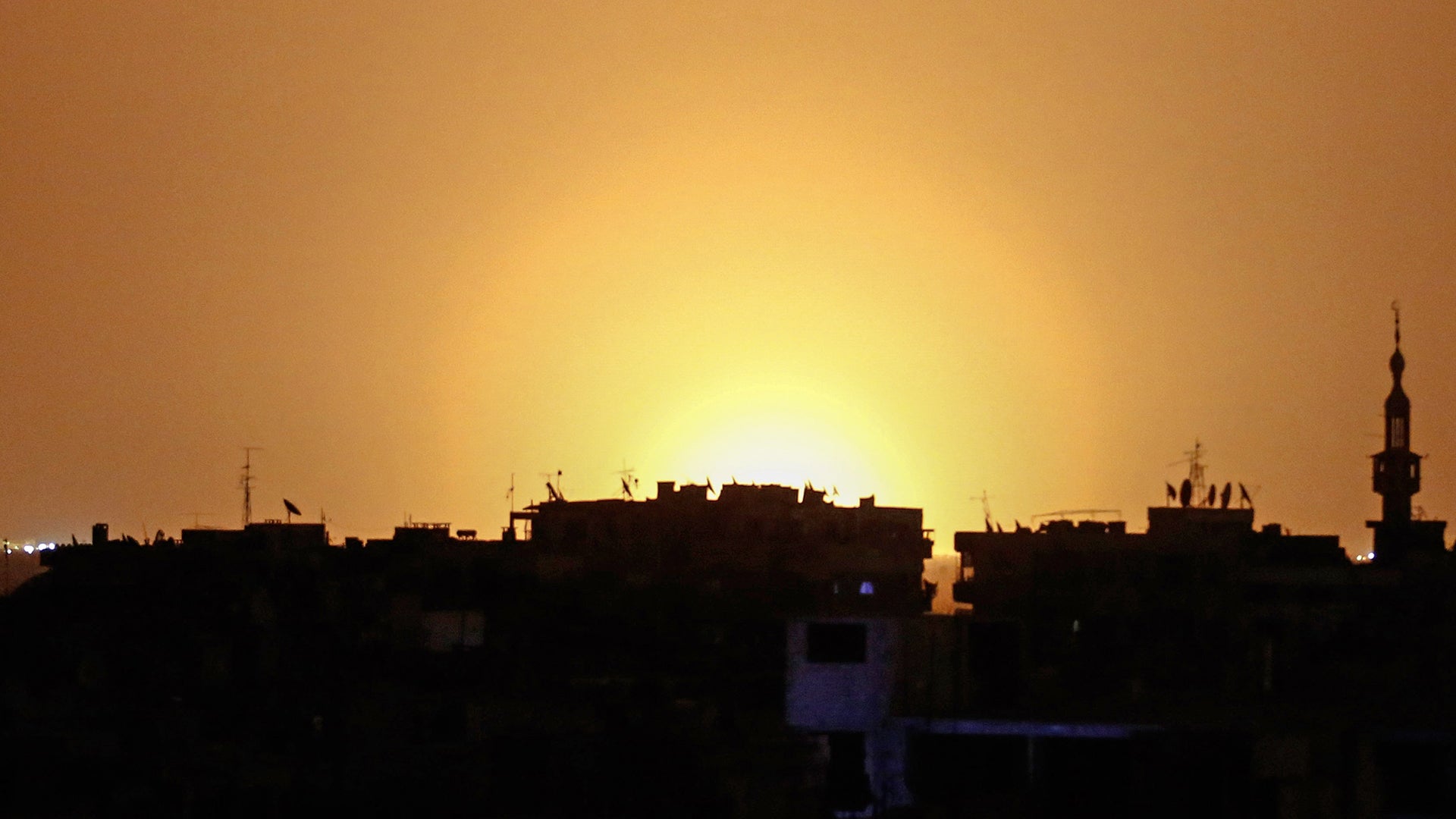The outskirts of Syria’s capital were rocked in the early hours on Thursday by what is now reported to have been an air strike conducted by the Israeli Air Force on a compound located on the southwestern edge of Damascus International Airport. According to Reuters, the targeted facility supposedly was the location of a large weapons depot housing arms that were destined for Hezbollah and other Iranian-backed Shiite militias.
The strike occurred at around 3:30AM local time, with a resulting fire lighting up the night sky over southeast Damascus. No casualties at the site have been reported. The Bashar al Assad government has already blamed Israel for the attack, and Israel doesn’t seem apt to deny that claim.
Intelligence Minister Israel Katz told Israeli Army Radio this morning the following concerning the attack: “I can confirm that the incident in Syria corresponds completely with Israel’s policy to act to prevent Iran’s smuggling of advanced weapons via Syria to Hezbollah in Iran. Naturally, I don’t want to elaborate on this…The prime minister has said that whenever we receive intelligence that indicated an intention to transfer advanced weapons to Hezbollah, we will act.”

Supposedly the depot is used to supply multiple Iranian-backed militias operating in Syria, not just Hezbollah, although Hezbollah largely coordinates their operations. The weapons are dropped off regularly by Iranian cargo jets that are a frequent fixture at the airport. The fact that this facility seems to be more like a distribution hub for war fighting material than a distinct weapons cache or advanced arms caravan that is destined for Hezbollah’s forces in Lebanon could mark a major escalation in Israel’s interdiction operations in the war torn country. If this ends up being accurate, and the facility directly supports Assad’s war fighting efforts, its destruction could enrage the regime far more than the destruction of the far more discreet shipments that Israel has struck in the past.
Israeli incursions into Syrian airspace and strikes against weapons transfers that are destined for Hezbollah in Lebanon have been a sporadic occurrence in recent years, but have accelerated quite drastically in recent months. For the first time, the Assad regime fired on IAF jets that were carrying out one of these operations on March 17th—a move that resulted in one of the Syrian SAMs being intercepted by an Israeli Arrow anti-ballistic missile. This incident marked the start of a rapid crescendo of saber rattling between Damascus and Jerusalem.

The reinvigorated Assad regime quickly stated it would no longer tolerate the strikes, and Israel replied that it could and would wipe out Assad’s air defenses if their aircraft are threatened. In response, the Assad regime said it would rain down Scud missiles on Israeli ports and air bases if the operations continue. There has been absolutely no sign that Israel would scale back its operations over Syria as a result of Damascus’s threats. Prime Minister Netanyahu has kept to the narrative that the strikes are defensive in nature as the weapons—some of them quite advanced—are meant to be used against Israel during a future conflict.
We will have to see what happens after this somewhat bold strike. Although Israel possesses highly advanced electronic warfare and cyber intrusion capabilities that have proven very capable against Assad’s air defenses, the window in which IAF aircraft can operate with near impunity over western Syria may be closing. Russia has proclaimed that they would begin to upgrade Assad’s air defenses after the US strike against Shayrat Air Base.
At the same time, three more F-35Is have arrived in Israel, which makes the IAF’s current “Adir” inventory set at five aircraft. With four months of bedding down behind them, and with the USAF’s F-35As and USMC’s F-35Bs making their first operational trip overseas, it is only a matter of time before the IAF declares its F-35s operational.

Whether or not the IAF would use their new stealth fighters for these types of missions is a whole other story. Unless Assad’s organic air defenses do end up getting upgraded, or if future targets emerge that are in close proximity to Russia’s advanced air defenses in Syria, and if Russia officially shuts the airspace off to the IAF, it is highly doubtful.
The fact is that Israel doesn’t really need to penetrate Syrian airspace to hit targets, even moving ones, inside the country. Israel’s armed forces have weapons specifically designed for this type of mission that can be launched at standoff ranges and controlled in real time. This enables them to be highly accurate—even against targets like fast-moving vehicles. The IAF’s drone force can also hit these smaller targets, and some of those drones are designed with a one-way trip in mind.
We will keep this post updated with any new information as it becomes available over the next 24 hours.
Update 1:10pm PST: An Israeli Patriot missile battery fired on and supposedly downed an unmanned aircraft over the Golan Heights.
Contact the author: Tyler@thedrive.com

